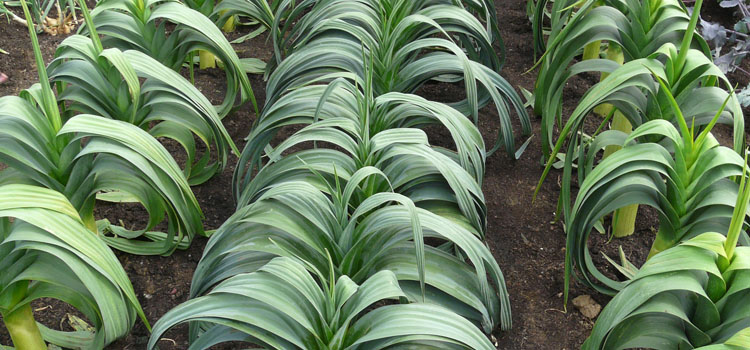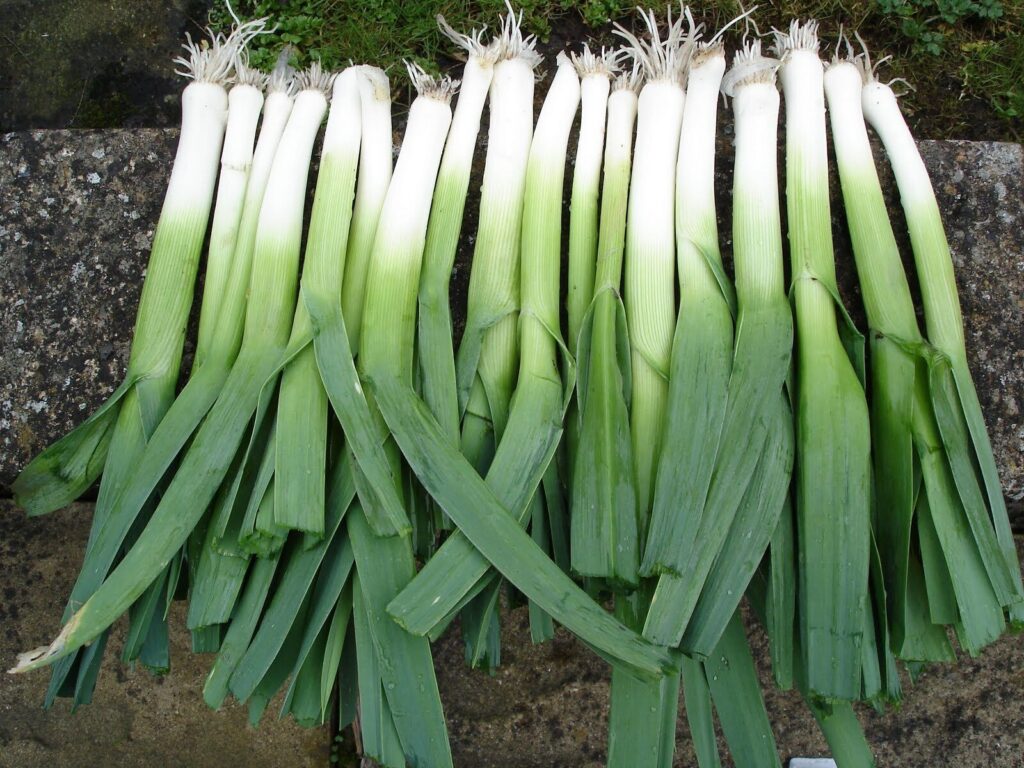
THIS GIANT BULGARIAN LEEK PLANT GERMINATES IN 1-2 WEEKS & HARVEST IN 110 DAYS.
Selling at $4 per 10 seeds or $8 for 20 seeds.
Add $4 pack/post to the order.
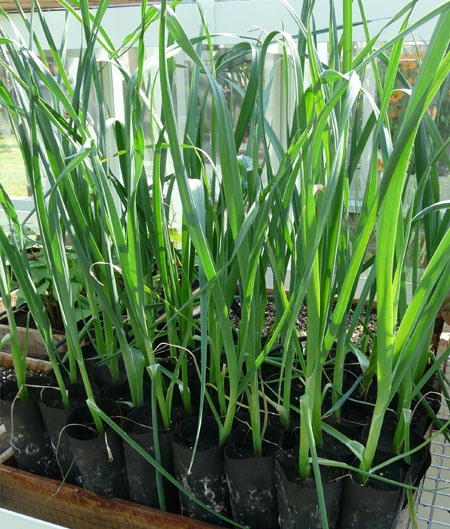
The earliest varieties can be sown under cover from late winter, with others following on from mid spring. Leeks are usually sown in pots or trays of potting soil and then transplanted into their final position when they’re big enough.
Sowing is very easy. Start by sieving potting soil into pots or trays. Gently tamp the potting soil down then sow the seeds very thinly so they fall about an inch (2-3cm) apart. You can also sow two seeds per cell in a plug tray. Now cover them over with a thin layer of more potting soil, and water them. Keep the potting soil moist as the seeds germinate and the seedlings grow on.
Early sowings should be placed on a sunny indoor windowsill or into a greenhouse where the warmth will encourage quicker growth. As the seedlings grow you can if you wish separate them out and pot them on into individual pots.
Transplanting Leeks
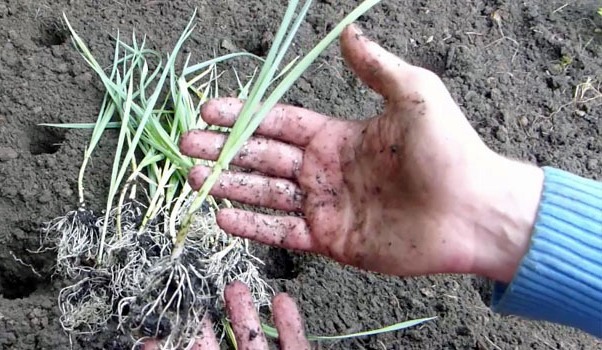
Before transplanting your young leeks make sure you’ve acclimatized them to outdoor conditions by leaving them outside for increasingly longer periods over the course of one to two weeks. They’re ready to transplant when they are six to eight inches (15-20cm) tall.
Begin by ‘dibbing’ (poking) holes that are about the same height as the leek seedlings’ stems into well-dug soil. You can use a purpose-made dibber for this, or improvise with a cut-down handle from an old broken spade or fork, or even use the handle-end of a hand tool such as a trowel. Make one hole for each plant. The holes should be about six inches (15cm) apart, with a foot (30cm) left between rows, or if you’re planting in blocks space then seven inches (20cm) apart each way.
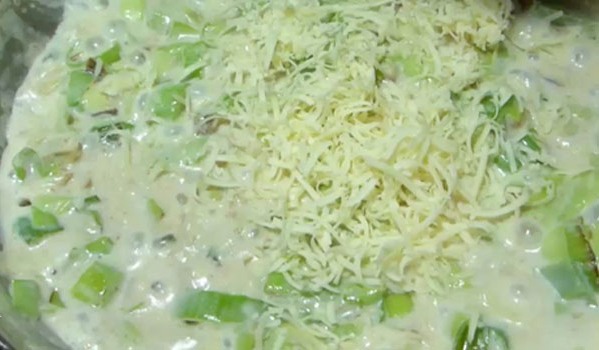
Now carefully remove the leeks from their pots and, if they haven’t already been potted on, tease the roots apart. Place the seedlings into the holes. It’s important that the roots reach right down to the bottom of the hole, so if necessary, help them along – you may need to trim them to get them in if they’re very long.
With your leeks in position, fill the holes to the brim with water and leave to drain. Do not fill in the holes. The soil will naturally fall back in with time, allowing the shanks (stems) to swell easily.
Caring for Leeks
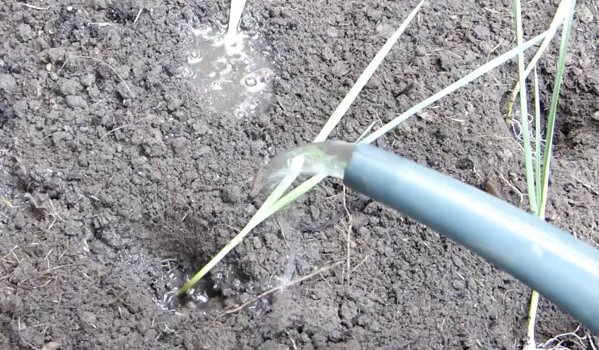
If you want to maximize space you can grow fast-growing salad leaves in between your newly planted leeks while you wait for them to establish. Salad crops are shallow-rooted so they won’t compete with the deeply-planted leeks. By midsummer the leeks will need all available space to encourage high light levels and good air circulation.
Easy-care leeks need very little attention. Water the plants in very dry weather and keep the ground between the leeks weed-free by hand weeding or hoeing weekly.
If you want really long, white stems, you can ‘blanch’ your leeks two to three weeks before you want to harvest them. Simply draw the soil up around the shanks to exclude light, or tie cardboard tubes around the stems.
Harvesting Leeks
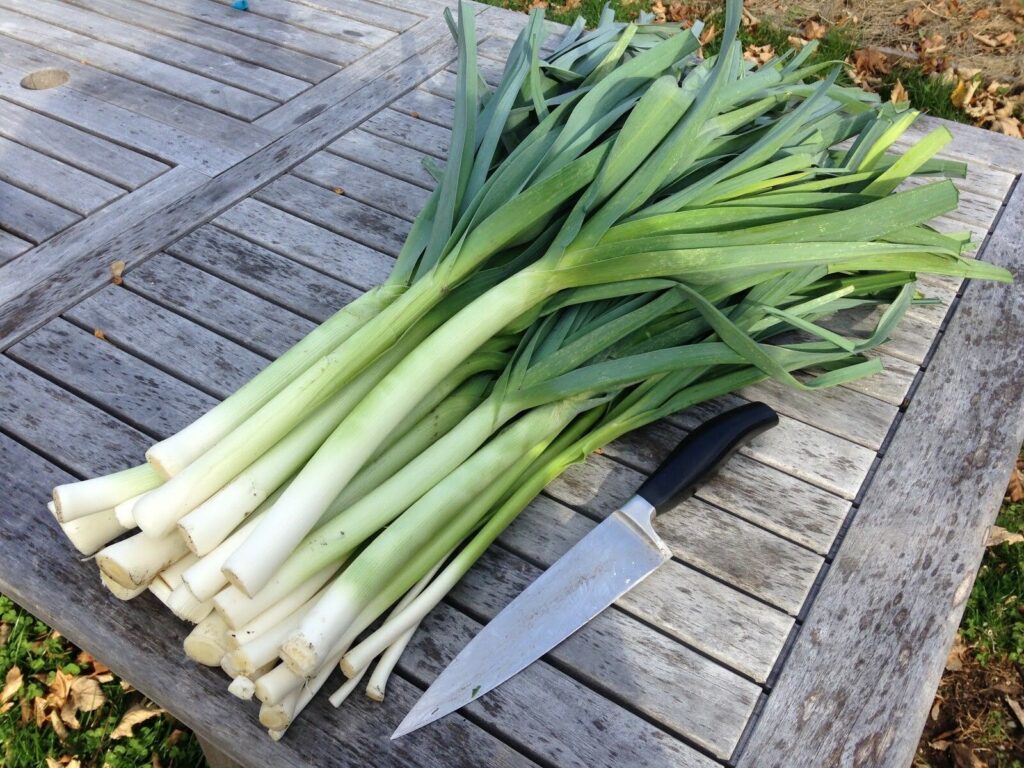
Leeks can be harvested as soon as they’ve reached the desired size. Slip a fork underneath the plant to lever it out, while pulling up on the leaves. Trim the roots and any damaged leaves onto the compost heap then wash away the soil ready for the kitchen. Hardy varieties may be dug up as needed over the winter, though in very cold areas you may want to dig them up before the ground freezes solid. Leeks are very versatile vegetables, and can be added to all manner of recipes, including stir-fries, quiches, soups, pies and tarts. For a luxury side dish try adding cream and grated cheese to sautéed leeks before serving piping hot with a grind of the pepper and salt mills. Mmm!
HOW TO GROW LEEKS VIDEO BELOW
Look after your leeks & they’ll love you back.Henry.
Buying or inquiring, then click the link below.


